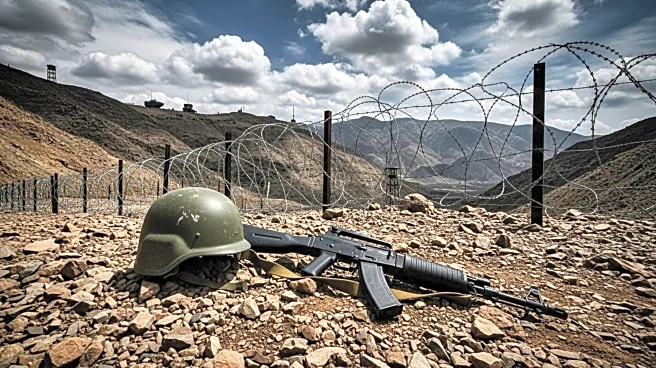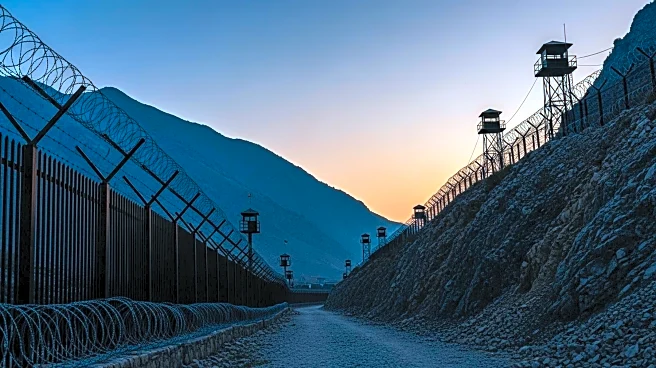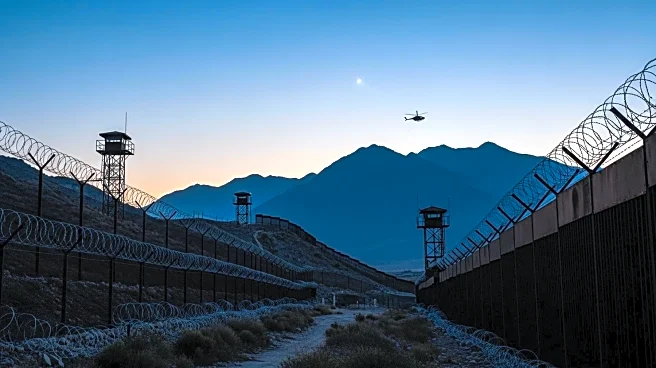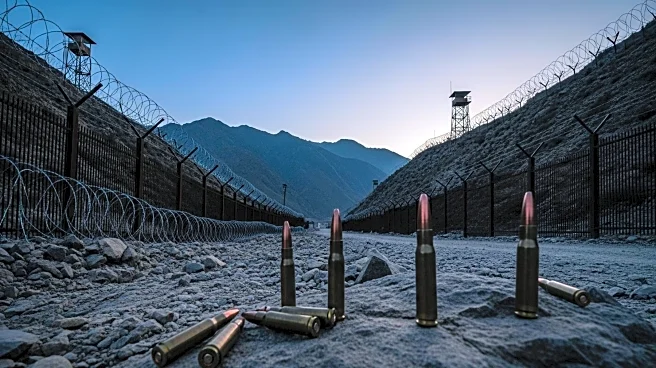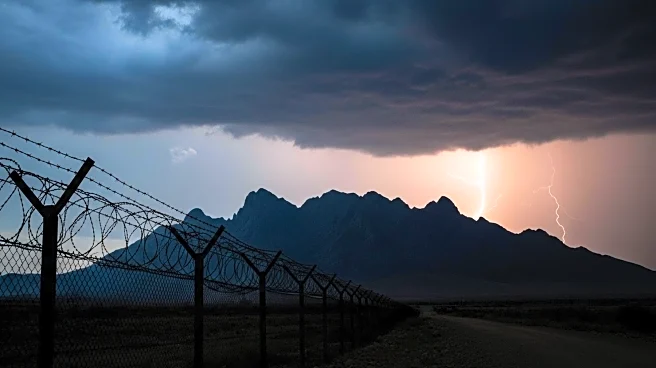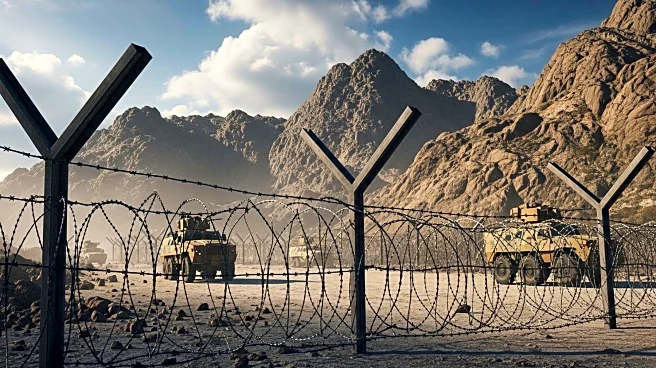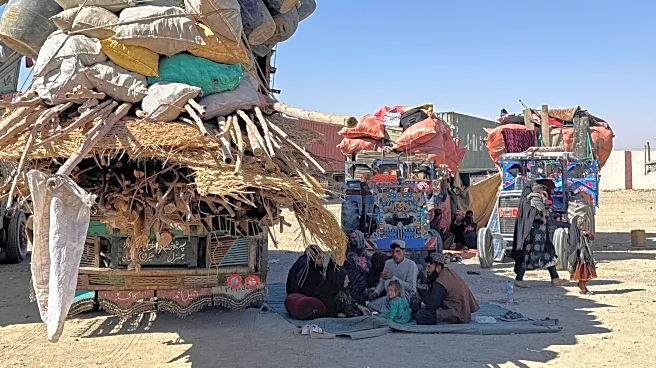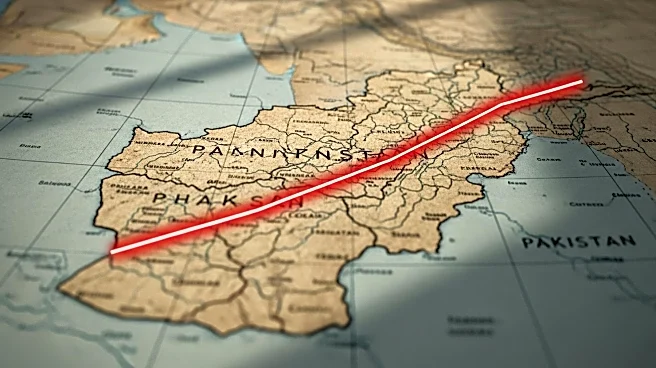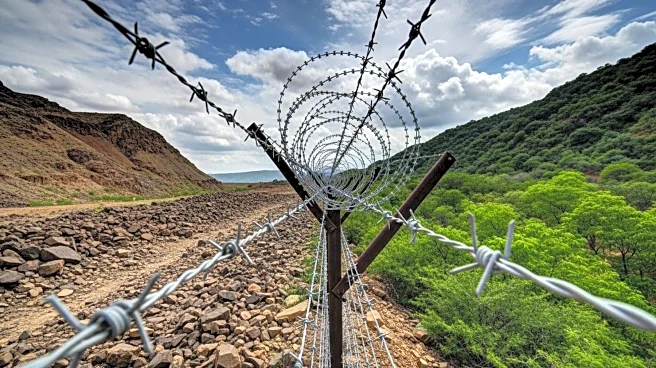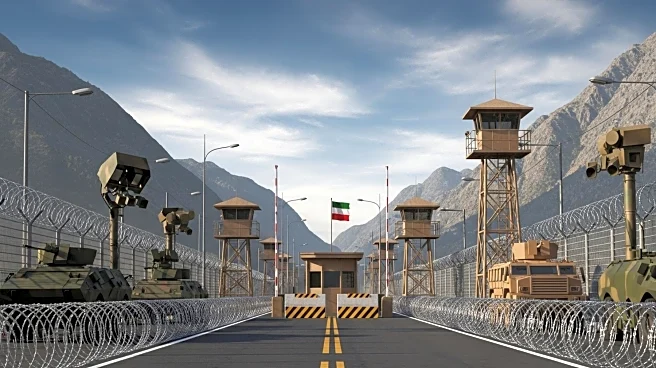What's Happening?
Afghanistan has reported that 58 Pakistani soldiers were killed in border clashes, following accusations from Kabul that Islamabad violated its airspace and attacked a market in eastern Afghanistan. The Taliban government stated that it retaliated by destroying 20 Pakistani outposts along the Durand Line, a disputed border between the two countries. The clashes resulted in the deaths of nine Afghan soldiers and injuries to 16 others. Pakistan's Foreign Minister Ishaq Dar accused Afghanistan of unprovoked firing and raids, while the Taliban emphasized their right to defend their airspace and borders.
Why It's Important?
The border conflict between Afghanistan and Pakistan highlights ongoing tensions and the potential for escalation in the region. Pakistan has accused Afghanistan of harboring terrorist groups, including the Tehrik-i-Taliban Pakistan (TTP), which could further strain relations. The situation poses risks for regional stability and could impact diplomatic relations, with countries like Qatar and Saudi Arabia urging dialogue. The conflict may also affect security dynamics, as both nations navigate their geopolitical interests and alliances.
What's Next?
The border between Afghanistan and Pakistan remains closed, and both countries are likely to continue diplomatic efforts to resolve the conflict. The Taliban government has expressed a preference for dialogue, while Pakistan demands concrete measures against terrorist elements. International stakeholders, including neighboring countries, may play a role in mediating the situation to prevent further escalation. The ongoing tensions could lead to increased military presence and surveillance along the border.
Beyond the Headlines
The border clashes underscore the complex historical and political dynamics between Afghanistan and Pakistan, rooted in the colonial-era Durand Line dispute. The conflict raises questions about sovereignty, territorial integrity, and the role of external actors in regional security. The situation may also influence broader geopolitical alignments, as countries reassess their alliances and strategies in response to shifting power dynamics.
